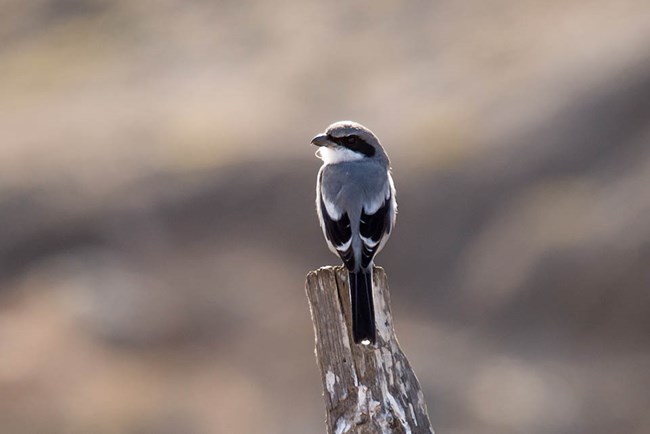
NPS / Jessica Weinberg McClosky
Why We Care
The California Channel Islands have been the focus of many studies looking at origin and differentiation, species composition and turnover among insular avifauna populations. Breeding land bird communities on the islands are depauperate when compared to those of the mainland. Of the approximately 160 species which breed along the southern California coast, only 44 breed in the park. Thirteen of those species have differentiated into eighteen endemic subspecies.
Landbird populations have been previously influenced by historic land management practices such as grazing and agriculture, and are currently responding to ecological changes due to the removal of non-native ungulates from the islands. For example, the Santa Barbara Island song sparrow (Melospiza melodia graminea) was driven to extinction by 1959 due to a combination of conversion of native habitat for agricultural purposes, habitat destruction by introduced rabbits (Oryctolagus cuniculus) and other grazing stock, and predation by feral cats (Felis catus).
These same land use practices on Santa Barbara Island have also reduced available breeding habitat for the orange-crowned warbler (Vermivora celata sordida), a neotropical migrant which, on Santa Barbara, nests only in the thick stands of Coreopsis scrub in the canyons. As the island recovers from the influences of past grazing, expansion of Coreopsis stands may be accompanied by an increase in breeding orange-crowned warblers.
How We Monitor
Park researchers have been monitoring land bird populations on the Channel Islands since 1993.
- Past methodology utilized line transects on the smaller islands (San Miguel, Anacapa, and Santa Barbara) and point count transects on larger Santa Rosa Island. Current methodology uses 226 randomly selected point count locations (33 on Santa Barbara, 8 on East Anacapa, 145 on Santa Rosa and 40 on San Miguel Island).
- To correlate data using the different methodologies, previously monitored line transects and point counts were conducted simultaneously with the newly selected random sites for a period of three years. Monitoring of old sites were discontinued in 2009 on Santa Rosa Islands but continues on the smaller islands.
- Surveys are conducted during spring (March - June), with observers recording data on all birds seen or heard. Perpendicular distance to birds is also recorded, facilitating estimation of density via distance methods.

NPS / Jessica Weinberg McClosky
Our Goals
- Determine the status and long-term trends in the distribution and abundance of breeding land birds
Why It Matters for Park Managers
- The number of species observed on each island and relative abundance of individual species on islands and in habitat types varies annually, due to interannual variation in migrant occurrence and land bird populations in general.
- Species richness varies by habitat type, being highest in riparian, grassland, coastal sage scrub and chaparral habitat types.
- Regression of landbird densities over time has provided trend results for a number of species. Several land bird species increased after cattle were removed from Santa Rosa Island. The program also detected ecological changes during the period of island fox (Urocyon littoralis) absence from the wild, due to captive breeding, on San Miguel and Santa Rosa Islands.
For More Information
Download 1-2 page PDFs about the Mediterannean Coast Network's monitoring programs.
Source: NPS DataStore Saved Search 3530. To search for additional information, visit the NPS DataStore.
The Mediterranean Coast Network documents its findings in reports published in the NPS Natural Resource Publication Series.
Source: NPS DataStore Saved Search 1503. To search for additional information, visit the NPS DataStore.
Protocols describe in detail the procedures used to collect, manage, analyze and report monitoring data. They follow strict guidelines for content and format, and are reviewed and revised by subject-matter experts in each field.
Source: NPS DataStore Saved Search 1515. To search for additional information, visit the NPS DataStore.
Contact
Last updated: December 6, 2018
